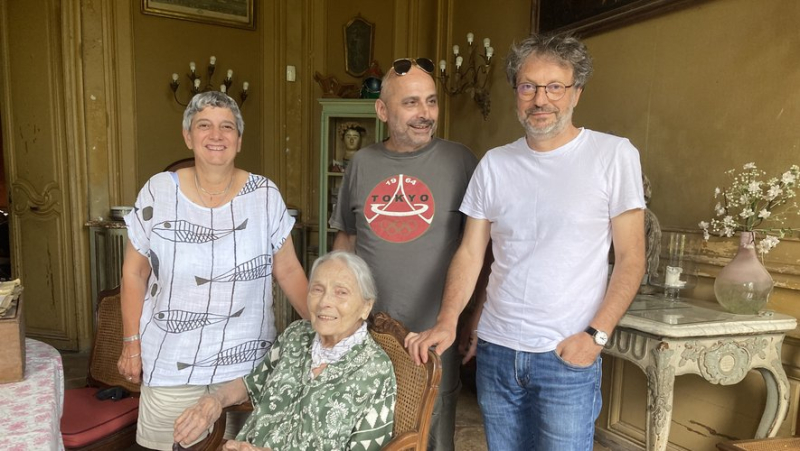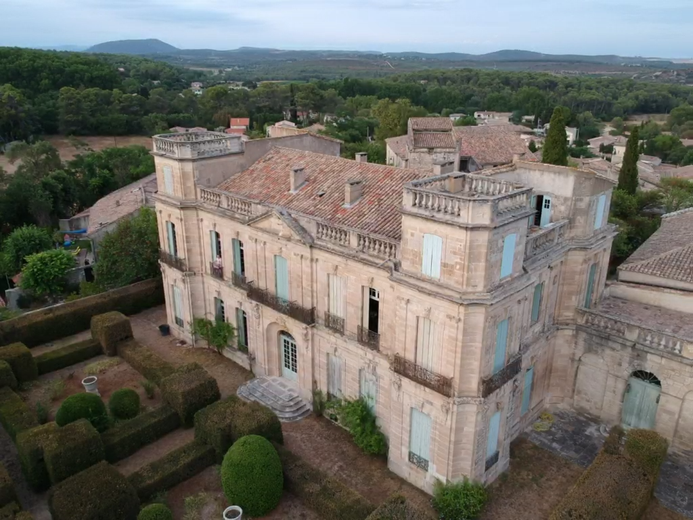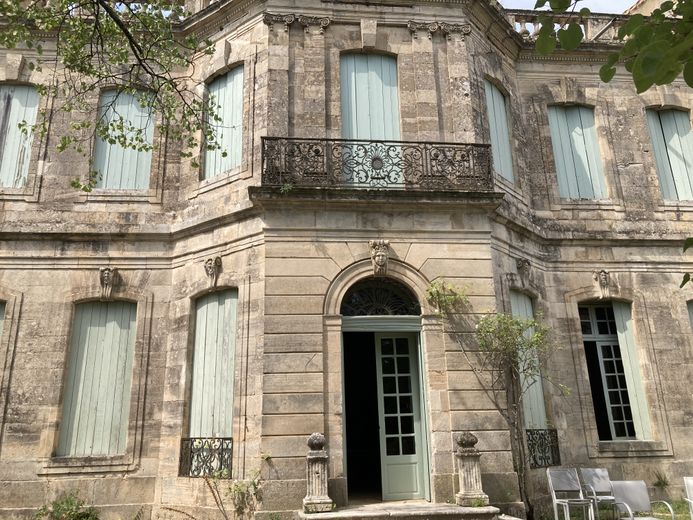CASTLE LIFE. For 75 years, the Demangel family has watched over the Château d’Assas

Autour de Marie-Claire Demangel, ses enfants Caroline et Olivier et son neveu Guilhem.
L'édifice, qui domine le village d'Assas, a été construit au milieu du XVIIIe siècle. Mais sans que l'histoire n'en ait rien retenu, un château médiéval et un autre de la Renaissance ont existé ici.
Under the chirping of the cicadas, the building offers its almost golden yellow stones to the rays of the August sun… "They come from a local quarry that unfortunately no longer exists", notes Guilhem Roustan, an architect by trade and nephew of Marie-Claire Demangel who lives in the Château d’Assas. Soon, on September 21 and 22, the château will reopen its doors to the public for the Heritage Days, then again for a concert in its music room at the end of September. For now, the family members, scattered across France and elsewhere, are enjoying the summer in the building that its owner compares to a lantern… "Windows everywhere, lots of light and ventilation".

Marie-Claire Demangel's parents, Simone and Robert, acquired the building in 1949. “We sometimes read that it's a folly, but no, the Folies de Montpellier were meant to be hidden, here we are on a height, with a view. We are on an old castle mound, on the remains of a first medieval castle." The church attached to the building is also from the 13th century, as are traces of a rampart. Mullioned windows in some houses in the village suggest that they come from another castle, dating from the Renaissance, but of which no traces remain.
Also read: At the Assas castle, the memory of Simone, a committed woman
A relationship with the castle of Engarran
The construction of the current castle dates back to 1760 and is the work of Jean-Antoine Giral, son of Etienne Giral who designed Peyrou in Montpellier. A relationship with the castle of Engarran de Lavérune (setting for the recent shooting of the film The Count of Montecristo) is obvious. Some elements are earlier, such as the ironwork balconies, which come from the dismantling of the Château de la Mosson.

The West facade of the Château d’Assas, with balconies from the Château de la Mosson.
The sponsors of the major project in the mid-18th century were recently ennobled Montpellier innkeepers, the Mouton de la Clotte. Wealthy aristocrats and apparently appreciated since the Revolution spared the building.“The coat of arms has however been hammered out, as have the towers been clipped in order to look more like a large house than a castle. I have always heard that it was the Assadins themselves who acted to prevent gangs from elsewhere from attacking the castle” says Mrs. Demangel.

The eastern facade of the Assas castle, exposed to the elements such as the sea wind, and more blackened.
The revolutionary turmoil would still result in the building becoming a national asset, before being bought in 1859 by the Bouché family who would resell it at the beginning of the 20th century to a property dealer from Montpellier who sold it piecemeal. The benefactor of the castle would be Scottish: Patrick Geddes, a botanist, friend of Charles Flahaut, creator of the Collège des Écossais in Montpellier. He had the ambition to make the place a building with a public purpose and a strong cultural dimension. He launched the application for classification which he would not see come to fruition. He died in 1932, it was acquired in 1937. “In the meantime, an aesthete, an antique dealer from Beaulieu on the Côte d'Azur, became the owner and brought his beautiful pieces here. This gentleman Normand became a friend of my parents, and in 1949 their seller.”
The descendants of Robert and Simone Demangel are still working, 75 years after its acquisition, to bring the Château d'Assas and its twenty or so rooms full of history to life…
Read also: LIFE IN THE CASTLE. Castries: the little Versailles of Languedoc
Read also: LIFE IN THE CASTLE. Montferrand, the distant memory of the Middle Ages
Harpsichord and old pianos
The castle has several old pianos as well as a magnificent 18th century harpsichord, acquired by Simone Demangel in 1965, in perfect condition. The American organist and harpsichordist Scott Ross recorded works there, such as a complete Couperin, in the 1970s, and despite his international career as a concert artist, he returned to Assas regularly. He died prematurely there in 1989 at the age of 38. The great names of baroque music came to the Château d'Assas which continues to program concerts.
I subscribe to read the rest




